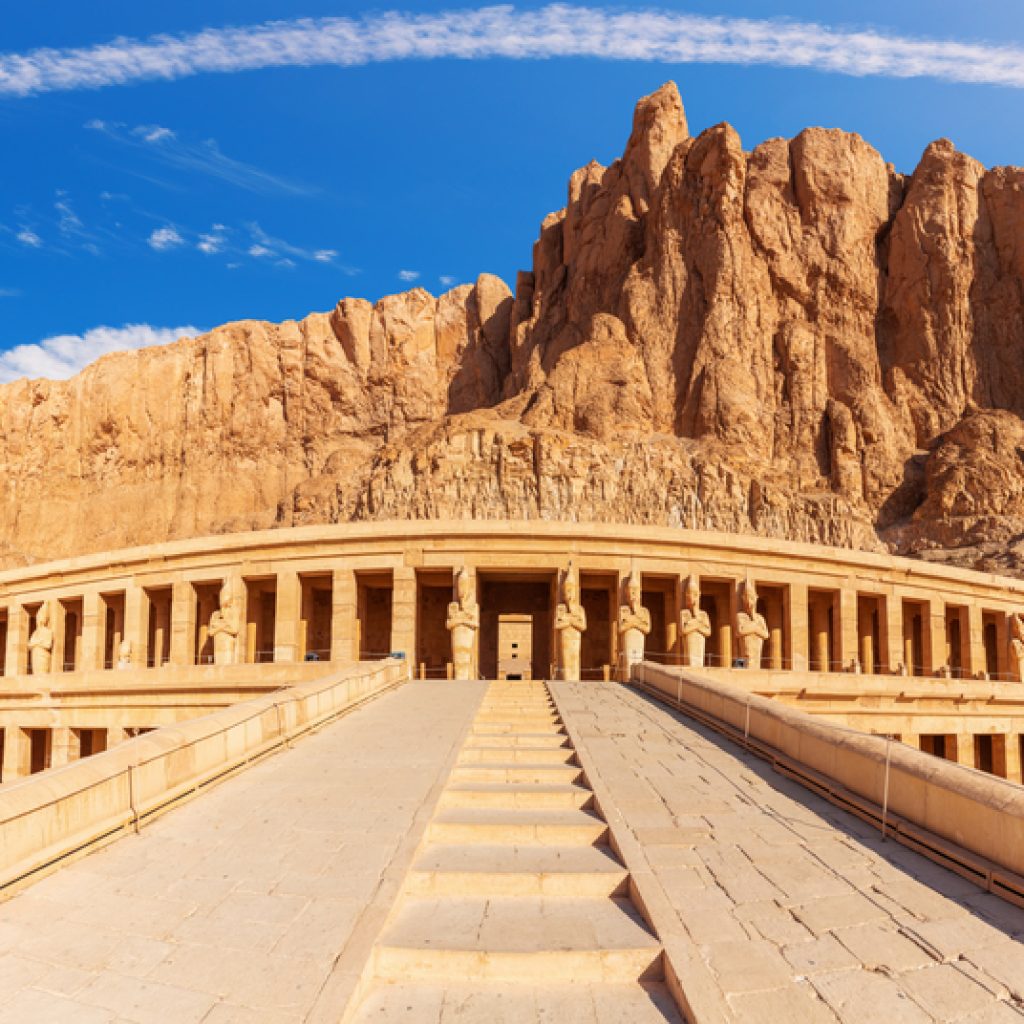The Temple of Queen Hatshepsut, also known as the Djeser-Djeseru, is an ancient temple located on the west bank of the Nile River in Luxor, Egypt. Built in the 15th century BCE, the temple is dedicated to the sun god Amun and is considered one of the finest examples of classical Egyptian architecture.
Queen Hatshepsut was one of the few female pharaohs in ancient Egypt and ruled over the country for approximately 22 years. She was a prolific builder, and the temple was one of her greatest achievements. The temple was designed by Senemut, Hatshepsut’s chief architect, and it was constructed over a period of 20 years.



The temple is carved into a natural amphitheater and consists of three ramps-connected terraces. The first terrace features a colonnade of 16 columns with square piers, and a courtyard with a large statue of Hatshepsut. The second terrace contains the main sanctuary of the temple, which is dedicated to Amun and features a hypostyle hall with 24 columns. The third terrace is the highest and contains a small shrine dedicated to Hathor, the goddess of love and joy.
One of the most striking features of the temple is its location. It is situated at the base of the cliffs surrounding the Valley of the Kings, where many of Egypt’s pharaohs were buried. The temple was designed to blend seamlessly into the natural surroundings, and the columns and statues were carved to mimic the surrounding cliffs.
The temple was abandoned after the end of the Pharaonic era, and it fell into disrepair. Over time, it was covered by sand and debris, and it was eventually forgotten. In the early 20th century, the temple was rediscovered by archaeologists, and a restoration project was undertaken to restore the temple to its former glory.
Today, the Temple of Queen Hatshepsut is one of the most popular tourist destinations in Egypt. Visitors can explore the temple and admire the intricate carvings and stunning architecture. The temple is also surrounded by beautiful gardens and offers stunning views of the Nile River and the surrounding mountains.
In conclusion, the Temple of Queen Hatshepsut is a remarkable testament to the ingenuity and skill of the ancient Egyptians. It’s striking architecture and intricate carvings continue to inspire awe and wonder, and it remains a must-see destination for anyone interested in the history and culture of Egypt.

0 Comment